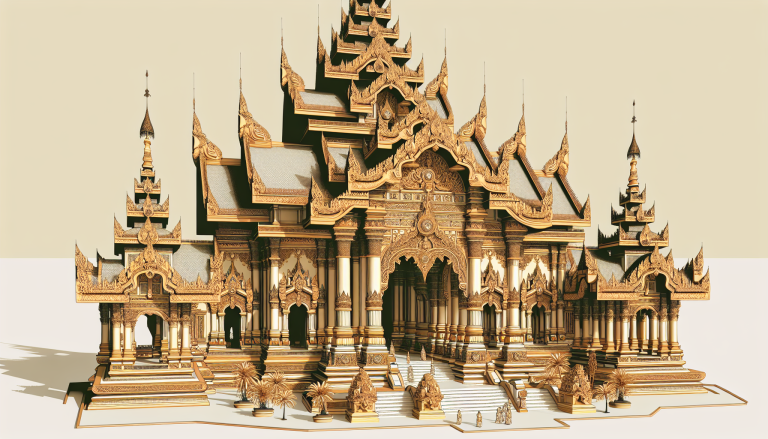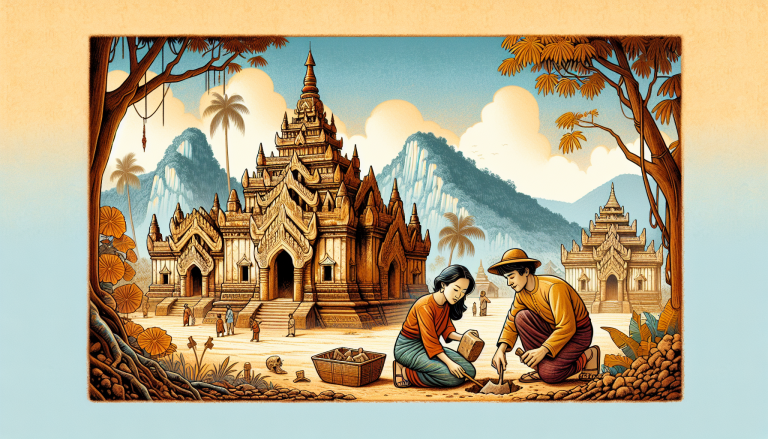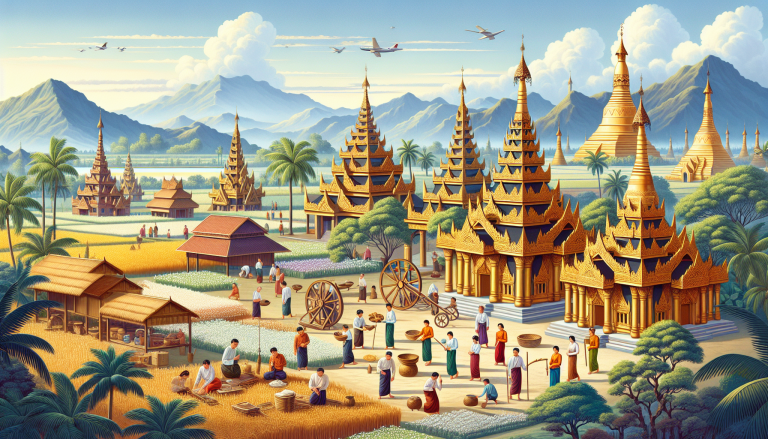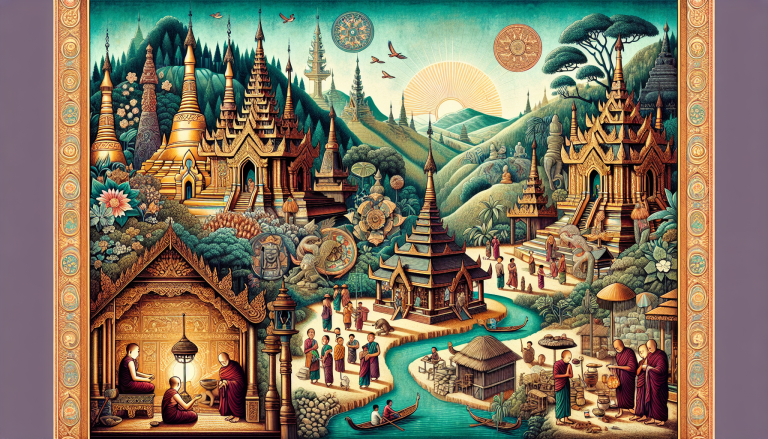Become a Time Traveler: Dive into Bagan Kingdom History
Time travel through Bagan Kingdom history! Discover ancient temples, cultural artifacts, and the rise and fall of Pagan.
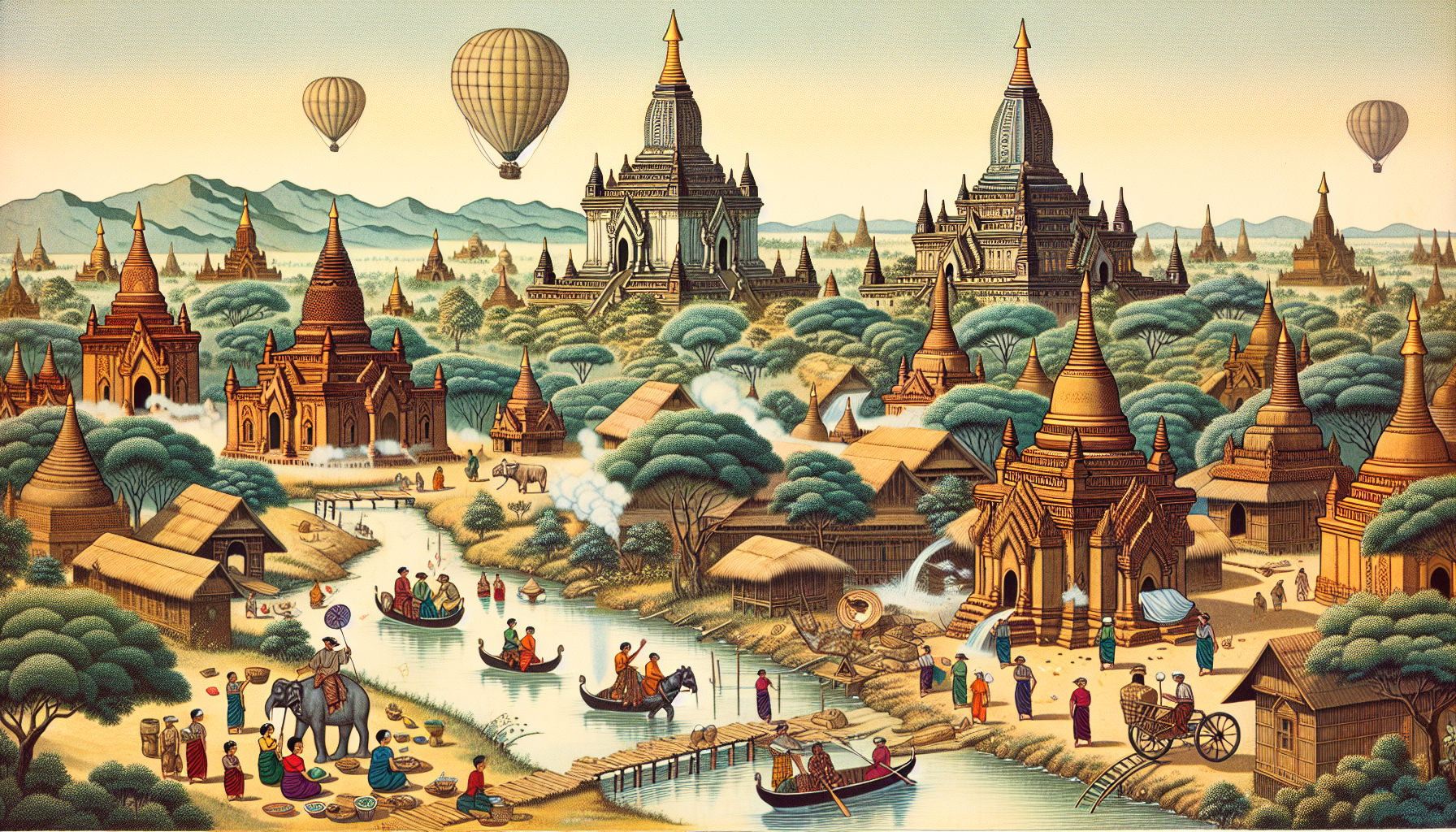
Ancient Civilization of Sri Ksetra
Exploring the history of Myanmar’s ancient civilizations offers a glimpse into the intricate tales of its past. One such significant civilization is Sri Ksetra, a prominent Pyu settlement that predates the well-known Bagan Kingdom.
The Magnificent Pyu Settlement
Sri Ksetra, strategically located along the Irrawaddy River, played a crucial role in early Southeast Asian history. This Pyu city is renowned for its monumental brick walls, which initially enclosed an area of 1,477 hectares but recent surveys have extended this to 1,857 hectares (Wikipedia). This makes it the largest Southeast Asian city before the Angkor period, larger than both eleventh-century Pagan and nineteenth-century Mandalay.
| Feature | Description |
|---|---|
| Location | Irrawaddy River |
| Initial Enclosed Area | 1,477 hectares |
| Current Enclosed Area | 1,857 hectares |
| Largest City Before | Angkor times |
Cultural Artefacts Unearthed
Sri Ksetra is notable for its rich collection of Pyu art, predominantly Buddhist in nature. Archaeologists have discovered a variety of artefacts that provide valuable insights into the cultural and religious influences on the Pyu people. These include:
- Votive Tablets: Small inscriptions or images used for religious offerings.
- Stone Sculptures: Artistic representations carved in stone.
- Bronze Sculptures: Metallic artefacts often depicting religious figures.
- Architectural Fragments: Pieces of buildings that showcase the architectural style of the period.
- Reliquary Objects: Containers holding sacred relics.
The variety and quality of these artefacts reveal a blend of influences from Indian, Southeast Asian cultures, including Southern India, Sri Lanka, Burma, and Thailand. These discoveries have been pivotal in understanding the ancient myanmar civilizations and their interactions with neighboring regions.
For those interested in the detailed kingship and chronology of Sri Ksetra, inscriptions found at the site mention two distinct dynastic names—Wikyama (Vikrama) and Warman (Varman)—providing further insights into the governance and lineage of the Pyu.
Dive deeper into ancient Myanmar scripts and other Myanmar historical documents to enrich your understanding of this fascinating civilization.
By exploring the historical sites in Myanmar, you can step back in time and witness the grandeur of the pagan empire myanmar and the vibrant cultural tapestry of the Pyu along the Irrawaddy River.
Rise of the Pagan Kingdom
Establishment by King Anawrahta
King Anawrahta founded the Pagan Kingdom in the 1050s and 1060s, creating a unified polity in the Irrawaddy Valley, which is part of present-day Myanmar. After defeating the Mon Kingdom in 1057, Anawrahta converted the region to Theravada Buddhism, marking the beginning of a significant religious and cultural shift. This conversion led to a temple-building frenzy that continued through his son and successors (Facts and Details).
table:
| Time Period | Major Event |
|---|---|
| 1050s-1060s | Founding of Pagan Empire by King Anawrahta |
| 1057 | Defeat of the Mon Kingdom |
The establishment of the Pagan Kingdom by Anawrahta laid the foundation for one of Myanmar’s most influential empires, making his reign a pivotal moment in burmese history.
Expansion and Influence of Pagan
Under Anawrahta and his successors, the Pagan Kingdom expanded its territory significantly. By the late 12th century, its influence extended to include:
- The upper regions of the Malay Peninsula in the south
- The Salween River in the east
- Areas near the current China border in the north (Wikipedia)
During this period, Pagan and the Khmer Empire were the two main powers in mainland Southeast Asia. The rulers of Pagan ordered over 10,000 Buddhist temples to be built between the 11th and 13th centuries, of which approximately 3,000 remain today.
| Region | Influence Area |
|---|---|
| South | Upper Malay Peninsula |
| East | Salween River |
| North | Near Current China Border |
| West | Northern Arakan and Chin Hills |
The Pagan Kingdom’s expansion facilitated the spread of Theravada Buddhism and established Pagan as a central hub of religion and culture in the region. This era marked a significant period in myanmar history and culture as the kingdom’s influence extended throughout Southeast Asia.
For a deeper dive into Anawrahta’s legacy and the Pagan Kingdom’s influence, explore our extensive resources on burmese monarchs and ancient myanmar civilizations.
Temples of Bagan
When you visit Bagan, you’re stepping into a world of architectural splendor. Known as one of the world’s largest archaeological sites related to Buddhism, Bagan once had nearly 3,000 recorded brick monuments during its heyday in the 11th to 13th centuries.
Architectural Marvels of Bagan
Bagan’s temples showcase a blend of architectural styles that reflect its rich history and cultural heritage. Influenced by Indian and Khmer designs, the temples stand as testament to the city’s grandeur and religious zeal. One of the most remarkable aspects of Bagan’s temples is their sheer number and variety. From towering stupas to intricate pagodas, each structure has its own unique charm.
| Temple Type | Notable Features | Examples |
|---|---|---|
| Stupas | Dome-shaped, housing relics | Shwezigon Pagoda |
| Temples | Rectangular, used for worship | Ananda Temple |
| Monasteries | Residential quarters for monks | Buphaya Monastery |
Explore these monumental structures and see how they combine engineering, spirituality, and art. For more on ancient Burmese architecture, check out myanmar ancient architecture.
Temple Construction and Legacy
The construction of Bagan’s temples was motivated by religious devotion. During King Anawrahta’s reign and through subsequent rulers, Bagan experienced an architectural golden age. Under the leadership of Narapatisithu and Htilominlo, Bagan reached its apex in political and administrative development, reflecting its progress in temple construction.
| Period | Key Ruler(s) | Notable Temples Constructed |
|---|---|---|
| 1044-1077 | King Anawrahta | Shwezigon Pagoda |
| 1174-1211 | Narapatisithu | Sulamani Temple |
| 1211-1235 | Htilominlo | Htilominlo Temple |
Religion infused every aspect of Bagan’s society. The temples were not just places of worship but also cultural hubs where art, education, and community activities thrived (Paths Unwritten). Traders from China and India enriched Bagan significantly, leading to an era where even royal children played with gold and silver toys.
Discover more about Bagan and its historical treasures in our articles about myanmar history and culture and myanmar historical sites. Dig deeper into the architectural evolution influenced by trade and religion in ancient burmese dynasties and theravada buddhism in myanmar.
Bagan’s temples today stand as a bridge connecting you with its glorious past, showcasing the kingdom’s enduring legacy.
Decline of the Pagan Kingdom
Economic Challenges and External Threats
The decline of the Pagan Kingdom began in the mid-13th century, predominantly due to economic challenges and the strain on resources. A significant factor was the continuous accumulation of tax-free religious wealth. This situation drastically diminished the crown’s ability to retain the loyalty of courtiers and military personnel.
To illustrate the kingdom’s economic strain:
| Factor | Impact |
|---|---|
| Tax-Free Religious Wealth | Depleted state revenues |
| Loss of Courtiers’ Loyalty | Weakened administration |
| Decreased Military Loyalty | Reduced defense capabilities |
The financial weakening of the crown also led to internal disorders. Various external threats aggravated the situation, with attacks from groups such as the Arakanese, Mons, Mongols, and Shans. These invasions further destabilized the kingdom, making it increasingly difficult to defend and maintain order.
Downfall and End of an Era
The downfall of Pagan culminated in 1287, following prolonged internal and external pressures (Wikipedia). The negative economic impacts and repeated Mongol invasions between 1277 and 1301 significantly contributed to the kingdom’s collapse. The Mongol invasions, in particular, proved devastating as they continuously weakened the kingdom’s defenses.
Key events leading to the downfall:
| Period | Event |
|---|---|
| 1277-1301 | Repeated Mongol invasions |
| 1287 | Collapse of the Pagan Kingdom |
The downfall marked the end of a 250-year-old kingdom known for its architectural and cultural brilliance. With the collapse, the once-mighty Pagan military, which ranged between 30,000 to 60,000 men, could no longer defend the capital (Wikipedia).
Despite its decline, the legacy of Pagan endures through the remarkable Buddhist temples and cultural imprints in the Bagan Archaeological Zone. Over 2,000 temples remain today, a testament to the kingdom’s historical and cultural significance.
Explore more on historic ancient burmese dynasties and myanmar historical events to enrich your understanding of the region’s rich past.

